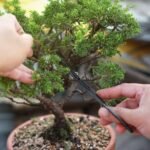How to Create a Pollinator Garden
Pollinator gardens play a vital role in supporting the health of our ecosystems by providing essential resources for bees, butterflies, birds, and other pollinators. These gardens not only enhance biodiversity but also improve the productivity of your own garden by encouraging effective pollination. This guide will walk you through the steps to create a vibrant, pollinator-friendly garden that attracts and supports these crucial insects and animals.

Understanding Pollinators
Types of Pollinators
Bees: The most important pollinators for many plants, bees come in various species, including honeybees, bumblebees, and solitary bees. They are attracted to brightly colored, fragrant flowers.
Butterflies: Butterflies are attracted to nectar-rich flowers and play a role in pollinating many garden plants. They prefer flowers with flat, clustered blooms that offer easy access to nectar.
Hummingbirds: Hummingbirds are attracted to tubular flowers that provide nectar. They are important pollinators for many plants and also add beauty to the garden with their vibrant colors.
Moths: Moths, especially night-flying species, pollinate flowers that bloom in the evening or at night. They are drawn to strong fragrances and pale-colored flowers.
Planning Your Pollinator Garden
Choosing the Right Location
Sunlight: Pollinator gardens thrive in sunny locations. Aim for at least 6 hours of sunlight per day to encourage healthy plant growth and attract pollinators.
Shelter: Provide some shelter from harsh winds and extreme temperatures. Planting near fences, walls, or other structures can offer protection for both plants and pollinators.
Accessibility: Ensure the garden is accessible for maintenance and monitoring. Incorporating pathways or stepping stones can help.
Selecting Pollinator-Friendly Plants
Diverse Plant Selection: Choose a variety of plants that bloom at different times of the year to provide continuous food sources for pollinators. Include plants with different flower shapes, sizes, and colors.
Native Plants: Native plants are adapted to your local climate and soil conditions, making them more resilient and better suited to attract local pollinators. They often require less maintenance and water.
Herbs and Vegetables: Many herbs and vegetables are excellent for pollinators. Plants like basil, oregano, and tomatoes attract bees and butterflies with their small, clustered flowers.
Best Plants for Pollinators
For Bees
Lavender (Lavandula spp.): Lavender’s fragrant, purple spikes are a favorite among bees. It’s also drought-tolerant and adds beauty to the garden.
Sunflower (Helianthus annuus): Sunflowers provide abundant nectar and pollen, making them highly attractive to bees. Their large, cheerful blooms are a garden highlight.
Bee Balm (Monarda spp.): Bee balm produces tubular flowers in vibrant colors, attracting a variety of bees. It also adds a lovely scent to the garden.
For Butterflies
Milkweed (Asclepias spp.): Milkweed is essential for monarch butterflies, providing both nectar and a habitat for their larvae. It’s a must-have plant for butterfly gardens.
Echinacea (Echinacea purpurea): Also known as coneflower, echinacea attracts butterflies with its bright, daisy-like blooms and is easy to grow.
Lantana (Lantana camara): Lantana produces clusters of small, colorful flowers that attract butterflies and are long-lasting throughout the growing season.
For Hummingbirds
Bee Balm (Monarda spp.): In addition to attracting bees, bee balm’s tubular flowers are also a favorite of hummingbirds.
Trumpet Creeper (Campsis radicans): This vigorous vine produces large, trumpet-shaped flowers that are highly attractive to hummingbirds.
Salvia (Salvia spp.): Salvia varieties with their tubular flowers provide nectar for hummingbirds and come in a range of colors.
Columbine (Aquilegia spp.): Columbine’s unique, bell-shaped flowers are perfect for attracting hummingbirds and add an elegant touch to the garden.
For Moths
Evening Primrose (Oenothera biennis): Evening primrose blooms in the evening, attracting moths with its strong fragrance and pale flowers.
Moonflower (Ipomoea alba): Moonflowers open at night, providing nectar for night-flying moths. Their large, white blooms are striking in moonlight.
Night-Blooming Jasmine (Cestrum nocturnum): This plant releases a strong fragrance at night, drawing moths and other nocturnal pollinators.
Creating a Pollinator-Friendly Environment
Provide Water
Water Sources: Include shallow water sources like birdbaths or small ponds with gentle slopes. Ensure there are rocks or sticks for pollinators to land on.
Maintenance: Keep water sources clean and fresh to prevent mosquito breeding and ensure a safe drinking spot for pollinators.
Avoid Pesticides
Natural Control: Minimize or eliminate the use of chemical pesticides, as they can harm pollinators. Opt for natural pest control methods or integrated pest management (IPM).
Beneficial Insects: Encourage the presence of beneficial insects, such as ladybugs and lacewings, to help manage pests naturally.
Provide Shelter
Nesting Sites: Include plant structures like hollow stems, leaf litter, and undisturbed soil areas to provide nesting sites for pollinators.
Pollinator Houses: Consider adding pollinator houses or bee hotels to offer shelter for solitary bees and other insects.
Conclusion
Creating a pollinator garden is a rewarding way to support the health of our environment and enjoy the beauty of diverse, colorful blooms. By selecting a variety of pollinator-friendly plants, providing essential resources, and minimizing harmful practices, you can create a thriving garden that attracts and supports bees, butterflies, hummingbirds, and moths. Embrace the joy of watching these vital creatures enhance your garden while contributing to their conservation.



